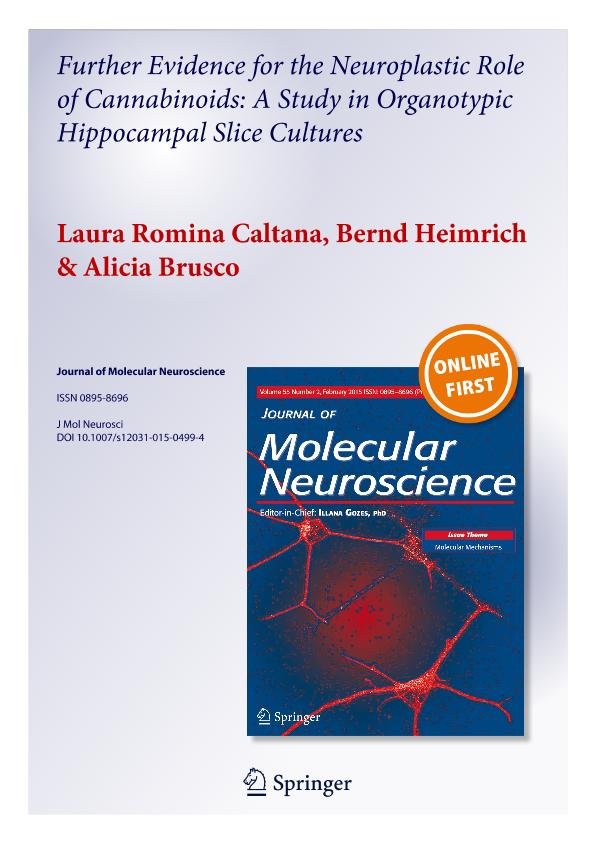Artículo
Further evidence for the neuroplastic role of cannabinoids: a study in organotypic hippocampal slice cultures
Fecha de publicación:
08/2015
Editorial:
Springer
Revista:
Journal Of Molecular Neuroscience : Mn.
ISSN:
0895-8696
e-ISSN:
1559-1166
Idioma:
Inglés
Tipo de recurso:
Artículo publicado
Clasificación temática:
Resumen
Endocannabinoid receptors CB1R and CB2R are present in the CNS and modulate synaptic activity. By using an in vitro model, two concentrations of CB1R agonist ACEA at 0.5 and 5 μM doses and CB1R antagonist AM251 at 1 and 10 μM doses were administered in organotypic slice cultures of mouse hippocampus, and their effects on neurons and glial cells were analyzed at different time points. Exposure to low concentrations of ACEA (0.5 μM) did not seem to affect tissue organization, neuronal morphology, or glial response. In contrast, at a higher concentration of ACEA, many neurons in the dentate gyrus exhibited strong caspase-3 immunoreactivity. After treatment with AM251, we observed an increase in caspase-3 immunoreactivity and a downregulation of CB1R expression. Results show that long-term hippocampal slice cultures respond to both CB1R activation and inactivation by changing neuronal protein expression patterns. In the present study, we demonstrate that CB1R agonist ACEA promotes alterations in the neuronal cytoskeleton as well as changes in CB1R expression in organotypic hippocampal slice cultures, and that CB1R antagonist AM251 promotes neuronal death and astroglial reaction.
Palabras clave:
Cannabinoids
,
Neuron
,
Neurotoxicity
Archivos asociados
Licencia
Identificadores
Colecciones
Articulos(IBCN)
Articulos de INST.DE BIOLO.CEL.Y NEURCS."PROF.E.DE ROBERTIS"
Articulos de INST.DE BIOLO.CEL.Y NEURCS."PROF.E.DE ROBERTIS"
Citación
Caltana, Laura Romina; Heimrich, Bernd; Brusco, Herminia Alicia; Further evidence for the neuroplastic role of cannabinoids: a study in organotypic hippocampal slice cultures; Springer; Journal Of Molecular Neuroscience : Mn.; 56; 4; 8-2015; 773-781
Compartir
Altmétricas




